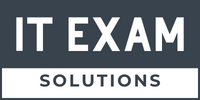Company overview - TerramEarth manufactures heavy equipment for the mining and agricultural industries. They currently have over 500 dealers and service centers in 100 countries. Their mission is to build products that make their customers more productive. Solution concept - There are 2 million TerramEarth vehicles in operation currently, and we see 20% yearly growth. Vehicles collect telemetry data from many sensors during operation. A small subset of critical data is transmitted from the vehicles in real time to facilitate fleet management. The rest of the sensor data is collected, compressed, and uploaded daily when the vehicles return to home base. Each vehicle usually generates 200 to 500 megabytes of data per day. Existing technical environment - TerramEarth's vehicle data aggregation and analysis infrastructure resides in Google Cloud and serves clients from all around the world. A growing amount of sensor data is captured from their two main manufacturing plants and sent to private data centers that contain their legacy inventory and logistics management systems. The private data centers have multiple network interconnects configured to Google Cloud. The web frontend for dealers and customers is running in Google Cloud and allows access to stock management and analytics. Business requirements - * Predict and detect vehicle malfunction and rapidly ship parts to dealerships for just-in-time repair where possible. * Decrease cloud operational costs and adapt to seasonality. * Increase speed and reliability of development workflow. * Allow remote developers to be productive without compromising code or data security. * Create a flexible and scalable platform for developers to create custom API services for dealers and partners. Technical requirements - * Create a new abstraction layer for HTTP API access to their legacy systems to enable a gradual move into the cloud without disrupting operations. * Modernize all CI/CD pipelines to allow developers to deploy container-based workloads in highly scalable environments. * Allow developers to run experiments without compromising security and governance requirements. * Create a self-service portal for internal and partner developers to create new projects, request resources for data analytics jobs, and centrally manage access to the API endpoints. * Use cloud-native solutions for keys and secrets management and optimize for identity-based access. * Improve and standardize tools necessary for application and network monitoring and troubleshooting. Executive statement - Our competitive advantage has always been our focus on the customer, with our ability to provide excellent customer service and minimize vehicle downtimes. After moving multiple systems into Google Cloud, we are seeking new ways to provide best-in-class online fleet management services to our customers and improve operations of our dealerships. Our 5-year strategic plan is to create a partner ecosystem of new products by enabling access to our data, increasing autonomous operation capabilities of our vehicles, and creating a path to move the remaining legacy systems to the cloud. For this question, refer to the TerramEarth case study. TerramEarth has a legacy web application that you cannot migrate to cloud. However, you still want to build a cloud-native way to monitor the application. If the application goes down, you want the URL to point to a "Site is unavailable" page as soon as possible. You also want your Ops team to receive a notification for the issue. You need to build a reliable solution for minimum cost. What should you do? A. Create a scheduled job in Cloud Run to invoke a container every minute. The container will check the application URL. If the application is down, switch the URL to the "Site is unavailable" page, and notify the Ops team. B. Create a cron job on a Compute Engine VM that runs every minute. The cron job invokes a Python program to check the application URL. If the application is down, switch the URL to the "Site is unavailable" page, and notify the Ops team. C. Create a Cloud Monitoring uptime check to validate the application URL. If it fails, put a message in a Pub/Sub queue that triggers a Cloud Function to switch the URL to the "Site is unavailable" page, and notify the Ops team. D. Use Cloud Error Reporting to check the application URL. If the application is down, switch the URL to the "Site is unavailable" page, and notify the Ops team. Suggested Answer: A This question is in Google Professional Cloud Architect Exam For getting Google Professional Cloud Architect Certificate Disclaimers: The website is not related to, affiliated with, endorsed or authorized by Google. Trademarks, certification & product names are used for reference only and belong to Google.
Please login or Register to submit your answer

